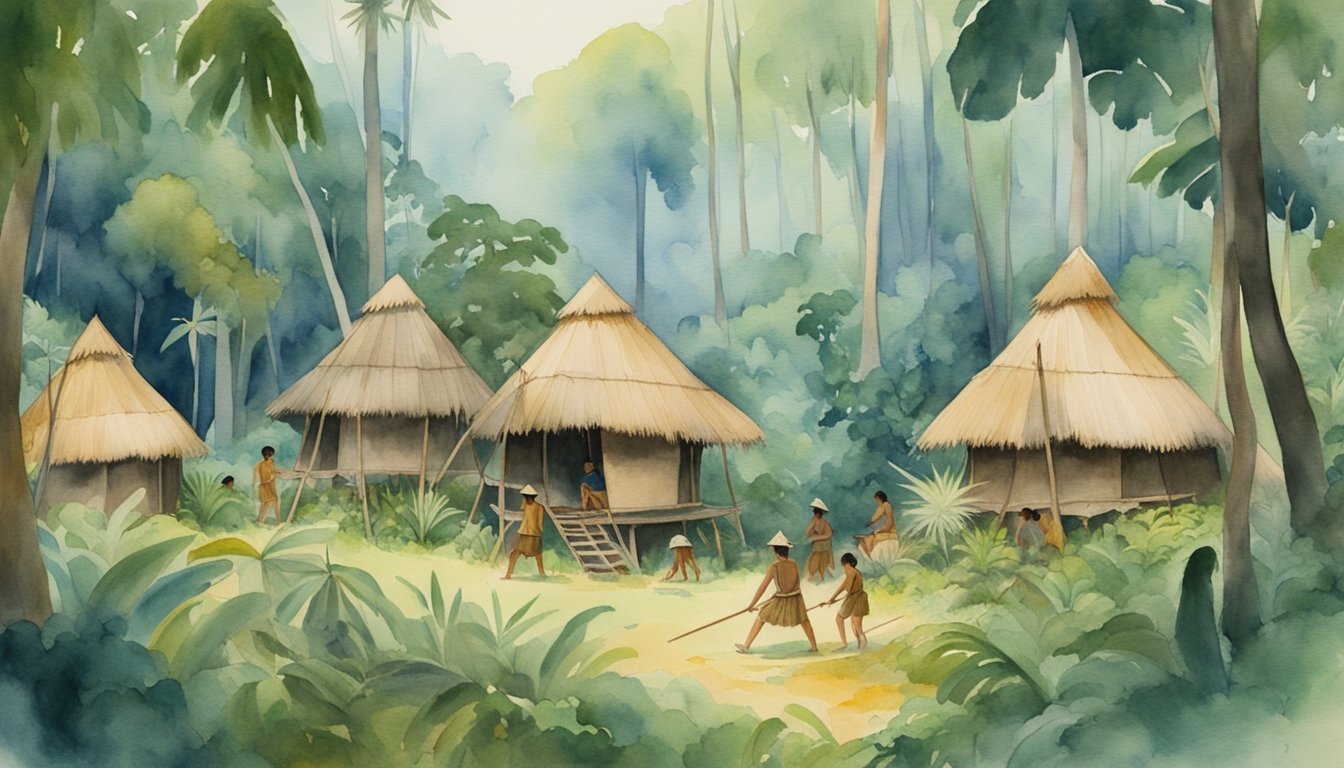Pygmy Cultures and Societies
The diverse Pygmy groups across Africa have rich cultural traditions and complex societies. These indigenous peoples are renowned for their intricate social structures, varied languages, and vibrant cultural practices.
Ethnic Groups and Distribution
Pygmies consist of several ethnic groups primarily found in the rainforest regions of Central Africa. Major groups include the Twa of the Great Lakes region, the Aka and Baka of the Congo Basin, and the Mbuti and Bambuti of the Democratic Republic of the Congo. Each group exhibits distinct cultural attributes, yet they share a common association with the dense forests of Central Africa, namely in countries like Cameroon, Gabon, Central African Republic, Rwanda, and Burundi.
Social Structure and Family
Pygmy societies are generally egalitarian with decisions often made by consensus. Family and kinship play pivotal roles in their social structure. They typically lead a semi-nomadic hunter-gatherer lifestyle with small, tight-knit communities that are deeply connected to the forest environment. The preservation of lineage and gene flow is crucial, ensuring the continued adaptation and resilience of these groups within diverse ecological niches.
Languages and Communication
Languages spoken by Pygmy groups are as diverse as the people themselves, often influenced by neighboring ethnic groups like the Bantu. This reflects a significant degree of linguistic assimilation and the complex phylogenetic relationships within the region. Languages include Ubangian, Central Sudanic, and Bantu languages like Rundi. Linguistic diversity is a testimony to their inter-tribal communication and history of gene flow.
Cultural Practices and Music
Pygmy culture is profoundly expressed through music, renowned for its intricately polyphonic and contrapuntal styles. Noted ethnomusicologist Simha Arom observed that their musical complexity is comparable with European polyphony of the 14th century. Their music plays a pivotal role in daily life and ceremonies, and is often characterized by dense communual improvisation, highlighting the cultural significance and the anthropological richness of the Pygmy societies.
Lifestyle and Environment

The Pygmies are an extraordinary example of human adaptation to a unique environmental niche, showcasing specialized practices that have allowed them to thrive in the Congo rainforests. Their relationship with the environment and their hunter-gatherer lifestyle illustrate a profound connection with nature, while also facing significant modern challenges due to external pressures.
Adaptation to the Rainforest
The African Pygmies, including groups such as the Bambenga and Mbenga, demonstrate an incredible example of convergent evolution through their short stature, which is believed to be an adaptation to their dense rainforest habitat. This physical trait provides advantages in heat dissipation and mobility within the forest understory.
Hunter-Gatherer Practices
As traditional forest hunter-gatherers, Pygmies expertly utilize the rainforest for subsistence. Their practices include hunting wildlife, fishing in the rivers, and gathering various agricultural products such as fruits and honey. These activities are essential for their daily sustenance and cultural traditions.
Interactions with Bantu Farmers
During the Bantu expansion, Bantu-speaking agriculturalists migrated into Central Africa, introducing a shift in the demographic history of the region. This migration led to increased interactions and sometimes conflicts between the Bantu farmers and Pygmy hunter-gatherers, impacting the traditional way of life of the Pygmies.
Challenges and Conservation
The Pygmy way of life is under threat due to loss of access to their traditional lands and the growth of industries like logging and agriculture. Efforts in conservation are needed to preserve their culture and support their rights to live in and sustainably manage their ancestral rainforest environment.

